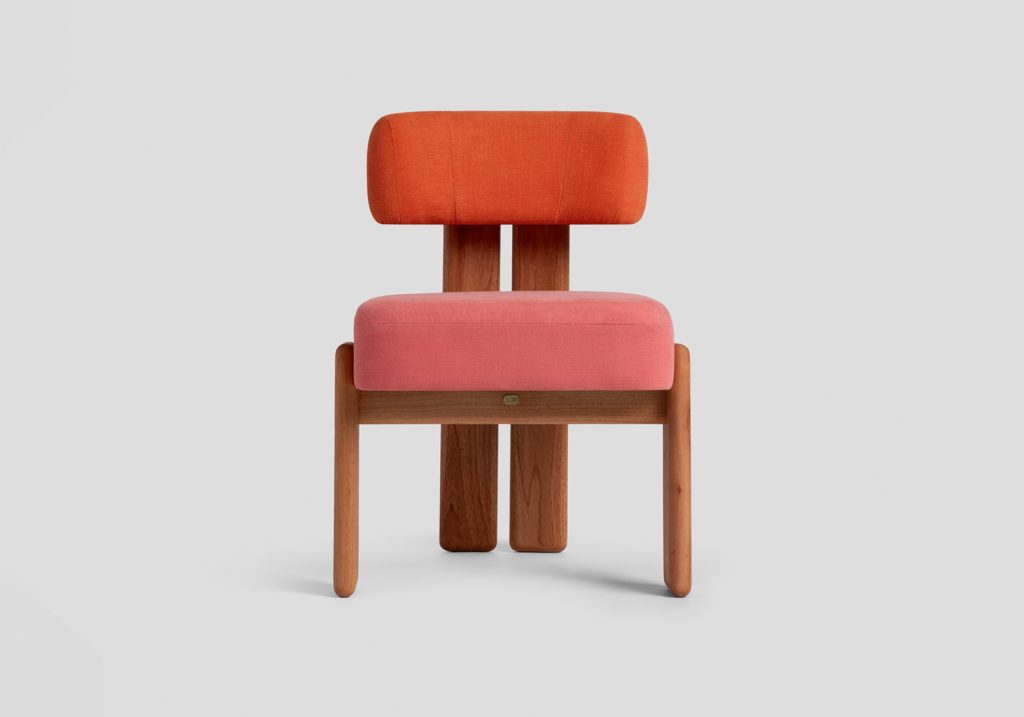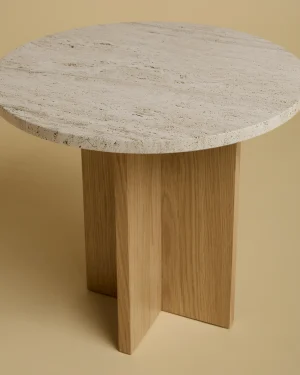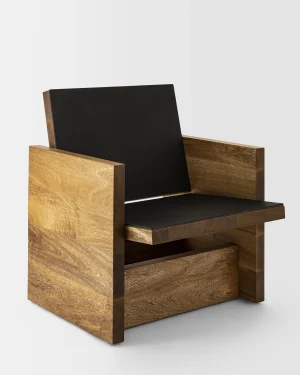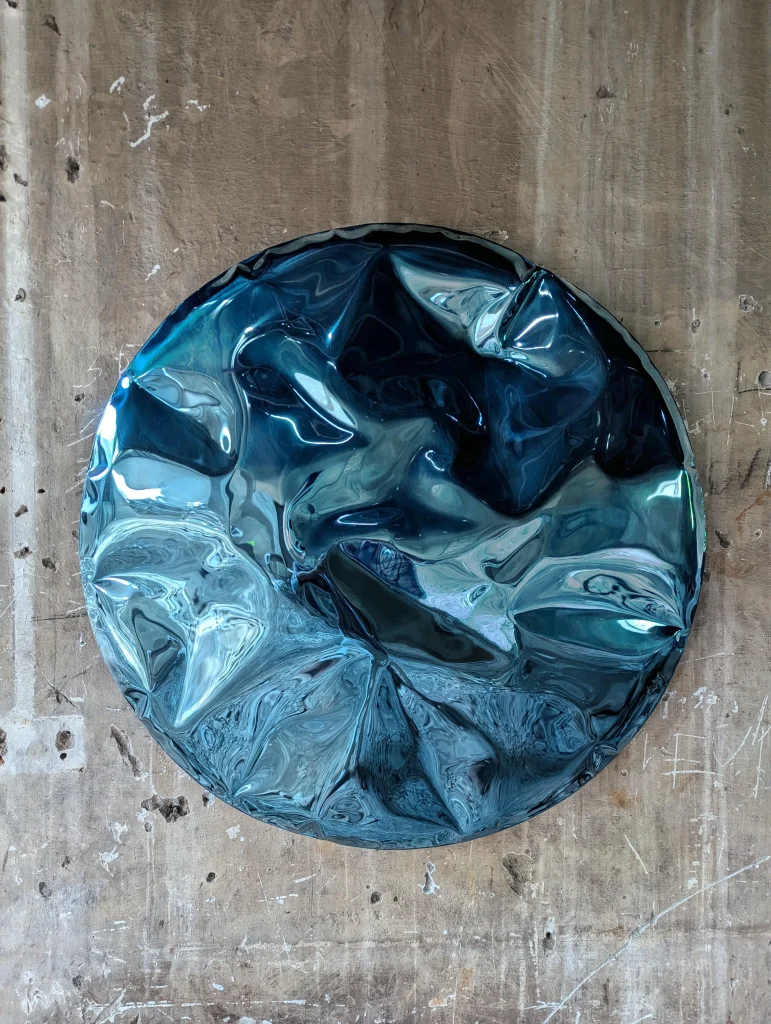
Why These 5 Design Legends Are Now More Relevant Than Ever
In the realm of design, certain names stand as timeless icons whose work continues to influence and inspire. As we witness a revival in appreciation for simplistic enduring aesthetics, the contributions of Enzo Mari, Lina Bo Bardi, Donald Judd, Børge Mogensen, Anni Albers, and Gaetano Pesce have found new relevance. Their philosophies and creations shaped their times, and still, resonate profoundly with contemporary trends. Human-centered, understated, minimalistic, especially woodwork seem to witness a resurge. But don’t be fooled– these creations might just create that canvas for expressive experimental pieces to thrive in the interiors we will see in 2024.
In the realm of design, certain names stand out as timeless icons, whose work continues to influence and inspire. As we witness a revival in the appreciation for simple, enduring aesthetics, the contributions of furniture design legends like Enzo Mari, Lina Bo Bardi, Donald Judd, Børge Mogensen, and Anni Albers have found new relevance. Their philosophies and creations not only shaped their eras but also continue to resonate powerfully with contemporary trends. Today, we see a resurgence in human-centered, understated, and minimalist designs, particularly in woodwork. However, these creations might not become the center of attention; they provide the perfect canvas for expressive and experimental pieces to flourish in the interiors of 2024 – A discipline Gaetano Pesce has mastered for fifty years.
This edit delves into their legacies, drawing parallels with the modern-day artisans featured on Adorno. A platform where we celebrate the union of history and contemporary culture.




1. Enzo Mari: The Human-Centric Designer
Enzo Mari, an advocate for design democratization, believed in creating objects that were both functional and aesthetically pleasing. His “Autoprogettazione” concept, a series of DIY furniture designs, embodies sustainable and human-focused design. This approach mirrors the ethos of Edoardo Lietti, whose work on Adorno emphasizes eco-friendliness and user interaction. Besides that, his practice also embraced the concept of open-source, long before this was a trend. Consequently, this inspired many designers and studios to publicly share drawings with DIY guides as resources. Some examples include “Self-Assembly”, and “Sketchchair”.
Sedia Tonda by Edoardo Lietti
Pieces like the Sedia Tonda Chair showcase Mari’s lasting influence. It encourages designs that invite the user to interact with the piece, while at the same time thinking of production sustainability. This minimalist design is made for flat-packing, reducing shipping costs and emissions.
2. Lina Bo Bardi: Soft Brutalism Inviting for Interaction








Lina Bo Bardi’s journey from Italy to Brazil imbued her work with a unique blend of cultural perspectives. Her ingenious use of local materials and commitment to creating brutalist spaces have fostered community interaction while redefining architectural norms.
Linde Freya Tangelder
Designers like Linde Freya from Destroyers Builders echo Bo Bardi’s narrative. She merges soft and inviting shapes and materials with a brutalist aesthetic. Pieces such as the Windows of Bo Bardi Side Tables not only pay homage to Bo Bardi’s raw aesthetics but also continue her legacy. This is done through continuous new designs that redefine topologies as a young woman.
3. Donald Judd: The Minimalist Maverick








Donald Judd’s minimalist ethos, characterized by clean lines and simplicity, challenged the complexity of traditional design. His functional, unadorned furniture pieces have become landmarks in minimalist design. This aesthetic is reflected in the works of designers like Moritz Bannach, Vital Lainé, Mock Studio, and Luis Solano, among others whose creations prioritize understated simplicity and practicality. Pieces like the SM1 Chair and the Miter Side Table on Adorno capture the essence of Judd’s minimalist principles. Ultimately, proving that simplicity remains a powerful and timeless design approach.


Moritz Bannach
Much like Judd’s straightforward pieces, the work of Moritz Bannach implies simple construction by design. By working theoretically with color combinations and natural wood, Bannach is taking this geometrical aesthetic into 2024.
Luiz Solano
Crafted from solid Tauari wood, this series by Luiz Solano offers simple surfaces suitable for seating or support, complemented by auxiliary components. The SM1 Chair elegantly combines a surface, backrest, and an armrest. The inclusion of these parts is up to the user and is seamlessly attached using black Allen screws. For added stability and protection to your floors, the chair legs are equipped with small rubber plates.
Vital Lainé
From listening to the material to the realization of the object, the model and the drawing are integrated into his creative process and play an important role in developing his projects. Creating objects halfway between the utilitarian and the sculptural, his unique approach to design allows him to propose a brutalist yet sensitive vision for each object. Whether industrial products, small series, or unique pieces, the formal simplicity of his creations offers elementary functionality to his designs.
4. Børge Mogensen: Functionality Meets Elegance








Børge Mogensen’s contribution to design is marked by his pursuit of functional yet elegant furniture that should be accessible to the masses. In his early career, he was on a quest to replace the bulky rococo furniture that was still dominating Danish homes. His designs, like the iconic Spanish Chair, combined practicality with aesthetic appeal and eventually became a highly collected maverick in furniture design.


Orlando Pippig
This philosophy is mirrored in the works of Orlando Pippig, whose designs focus on marrying Mogensen’s view on functionality with Judd’s simplistic elegance. Through pieces like his OP-C01 Chair, he shows how to master the crafts and architectural qualities of mid-century modern, showcasing how Mogensen’s design principles continue to influence contemporary furniture design.
5. Anni Albers: A Textile Revolutionist




Anni Albers revolutionized textile art by elevating it to a form of high art and design. Her innovative approach to materials and weaving techniques influenced not just the art world but also modern textile design. This spirit of innovation is seen in the works of MAYE and Comité de Proyectos, who in their latest collaborative collection experimented with textiles and colors inspired by Anni Albers. Resulting in two new variations of the De La Paz chair, launched on Adorno, these are testaments to Albers’ enduring impact, showcasing the versatility and artistic potential of textiles.




Anni Chair by Comité de Proyectos
Inspired by the work of Bauhaus textile artist Anni Albers, this version of the De La Paz chair, named after her, is an exploration of the use of color through collaboration.
MAYE, experts in colorimetry, were inspired by two of Anni’s works to create pieces that dialogue with contemporary design. These combinations were adapted to the De La Paz chair, a piece that recently became part of the Comité de Proyectos catalog.
6. Gaetano Pesce: The Visionary of Versatility and Expression








Amid simplistic understated design, it is important not to forget the importance of expressionistic radical design. Gaetano Pesce, an Italian architect and designer, stands as a visionary in the world of modern design. Renowned for his innovative use of materials, colors, and forms, Pesce’s work defies convention, blurring the lines between art, design, and industrial production. His philosophy centers on the idea that imperfection and variability are sources of richness and uniqueness in design, a stark contrast to the mass-produced uniformity prevalent in the industry.
Much like Pesce, many designers on Adorno such as Adir Yakobi, and Gustavo Barroso, embrace this exaggerated expressionism. A style that has become increasingly more accepted in the past years, and blends perfectly with understated design in today’s aesthetics.
Adir Yakobi
Yakobi’s approach is characterized by a playful yet profound exploration of substance, form, and hue, fostering a seamless flow between various disciplines. Each of Yakobi’s designs radiates a juxtaposition of futuristic and ancient aesthetics, challenging and redefining the conventional perceptions of what a functional object can embody.
Bridging the past with contemporary makers
The enduring impact of Enzo Mari, Lina Bo Bardi, Donald Judd, Børge Mogensen, Anni Albers, and Gaetano Pesce is undeniable. Their philosophies and designs, characterized by simplicity, functionality, and a deep understanding of materials and cultural contexts, continue to resonate in today’s design world. At Adorno, by featuring contemporary designers who embody these timeless principles, we serve as a bridge connecting the past’s mastery with today’s innovation. Their legacies remind us of the power of design to transcend time and place, continually inspiring and reshaping the world around us.
Support the work of Independent makers who are mastering their disciplines and carrying on the legacy of these historical legends. Discover the elegance of their crafts and how, despite simplistic shapes, each piece brings its distinct characteristics.
Browse our Selection of Designs That Will Define 2024
-

 Hashi – Circular Marble Coffee TableBy LebantoPrice range: €3.355 through €4.988 incl. tax
Hashi – Circular Marble Coffee TableBy LebantoPrice range: €3.355 through €4.988 incl. tax -

 Sun V3-b – 3d Printed Sand LampBy Rollo Studio€4.416 incl. tax
Sun V3-b – 3d Printed Sand LampBy Rollo Studio€4.416 incl. tax -

 Sherman – Verde Tifone And Oak Side TableBy Lebanto€3.375 incl. tax
Sherman – Verde Tifone And Oak Side TableBy Lebanto€3.375 incl. tax -

 Sherman – Emperador Dark And Oak Side TableBy Lebanto€2.313 incl. tax
Sherman – Emperador Dark And Oak Side TableBy Lebanto€2.313 incl. tax -

 Sherman – Roman Travertine And Oak Side TableBy Lebanto€2.063 incl. tax
Sherman – Roman Travertine And Oak Side TableBy Lebanto€2.063 incl. tax -

 Amami – Round Transparent Glass Side TableBy Lebanto€1.044 incl. tax
Amami – Round Transparent Glass Side TableBy Lebanto€1.044 incl. tax -

 Aka – Round Transparent Glass Coffee TableBy Lebanto€1.119 incl. tax
Aka – Round Transparent Glass Coffee TableBy Lebanto€1.119 incl. tax -

 Baker – Calacatta Violet Marble Side TableBy Lebanto€2.131 incl. tax
Baker – Calacatta Violet Marble Side TableBy Lebanto€2.131 incl. tax -

 Aka – Round Smoked Glass Coffee TableBy Lebanto€1.269 incl. tax
Aka – Round Smoked Glass Coffee TableBy Lebanto€1.269 incl. tax -

 Amami – Round Bronzed Glass Side TableBy Lebanto€1.094 incl. tax
Amami – Round Bronzed Glass Side TableBy Lebanto€1.094 incl. tax -

 Eclipse Olo – Sculptural NightstandBy Panorammma Atelier€4.350 incl. tax
Eclipse Olo – Sculptural NightstandBy Panorammma Atelier€4.350 incl. tax -

 Fire – Round Chocolate Metal Coffee TableBy Lebanto€1.163 incl. tax
Fire – Round Chocolate Metal Coffee TableBy Lebanto€1.163 incl. tax -

 Wake – Chocolate Metal Side TableBy Lebanto€1.128 incl. tax
Wake – Chocolate Metal Side TableBy Lebanto€1.128 incl. tax -

 Amami – Round Smoked Glass Side TableBy Lebanto€1.169 incl. tax
Amami – Round Smoked Glass Side TableBy Lebanto€1.169 incl. tax -

 Wax Clock Altar Candle HolderBy Panorammma Atelier€6.000 incl. tax
Wax Clock Altar Candle HolderBy Panorammma Atelier€6.000 incl. tax -

 Sensitive Wood – Oak Side Table / CabinetBy Vital Lainé€2.125 incl. tax
Sensitive Wood – Oak Side Table / CabinetBy Vital Lainé€2.125 incl. tax -

 Sensitive Wood – Domino ChairBy Vital Lainé€1.250 incl. tax
Sensitive Wood – Domino ChairBy Vital Lainé€1.250 incl. tax -

 Sherman – Calacatta Violet And Oak Side TableBy Lebanto€2.500 incl. tax
Sherman – Calacatta Violet And Oak Side TableBy Lebanto€2.500 incl. tax -

 Vosk – Stainless Steel CandelabrumBy Primitive Buro€1.625
Vosk – Stainless Steel CandelabrumBy Primitive Buro€1.625 -

 Flow — Stainless Steel Side TableBy Primitive Buro€2.000
Flow — Stainless Steel Side TableBy Primitive Buro€2.000 -

 Don – Minimalist Cherry Plywood Lounge ChairBy Mock Studio€1.500 incl. tax
Don – Minimalist Cherry Plywood Lounge ChairBy Mock Studio€1.500 incl. tax -

 Stacking ChairBy Mock Studio€1.500 incl. tax
Stacking ChairBy Mock Studio€1.500 incl. tax -

 Miter – Frosted Acrylic Side TableBy Mock Studio€938 incl. tax
Miter – Frosted Acrylic Side TableBy Mock Studio€938 incl. tax -

 Abbondio – Multi Colored Dining TableBy BANNACHPrice range: €5.875 through €7.125 incl. tax
Abbondio – Multi Colored Dining TableBy BANNACHPrice range: €5.875 through €7.125 incl. tax -

 Shear 02 – Walnut Wood Side TableBy Mock Studio€838 incl. tax
Shear 02 – Walnut Wood Side TableBy Mock Studio€838 incl. tax -

 Miter – Burl Wood Side TableBy Mock Studio€1.750 incl. tax
Miter – Burl Wood Side TableBy Mock Studio€1.750 incl. tax -

 Miter – Aluminum Side TableBy Mock Studio€1.500 incl. tax
Miter – Aluminum Side TableBy Mock Studio€1.500 incl. tax -

 Clavijero – Blackened Oak Wood Lounge ChairBy Peca Mobiliario€6.900 incl. tax
Clavijero – Blackened Oak Wood Lounge ChairBy Peca Mobiliario€6.900 incl. tax -

 Abstract Formations – Sculptural Ceramic ChairsBy Ia Kutateladze€3.750 incl. tax
Abstract Formations – Sculptural Ceramic ChairsBy Ia Kutateladze€3.750 incl. tax -

 Aurum – Gold Leaf Cabinet 100 Cm StorageBy Peca Mobiliario€16.100 incl. tax
Aurum – Gold Leaf Cabinet 100 Cm StorageBy Peca Mobiliario€16.100 incl. tax -

 Amud – Walnut Side TableBy Selma Lazrak€3.438
Amud – Walnut Side TableBy Selma Lazrak€3.438 -

 Clavijero – Rosa Morada Wood Lounge ChairBy Peca Mobiliario€6.588 incl. tax
Clavijero – Rosa Morada Wood Lounge ChairBy Peca Mobiliario€6.588 incl. tax -

 T03 – Sculptural Stoneware Brutalist Side TableBy Ia Kutateladze€1.576 incl. tax
T03 – Sculptural Stoneware Brutalist Side TableBy Ia Kutateladze€1.576 incl. tax -

 Elio – Lacquered Conference TableBy BANNACHPrice range: €4.813 through €6.063 incl. tax
Elio – Lacquered Conference TableBy BANNACHPrice range: €4.813 through €6.063 incl. tax -

 Contemporary Vanity Aluminum CandelabraBy Six Dots Design€706 incl. tax
Contemporary Vanity Aluminum CandelabraBy Six Dots Design€706 incl. tax -

 Sensitive Wood Floor Lamp – Marguerite Bs02By Vital Lainé€3.125 incl. tax
Sensitive Wood Floor Lamp – Marguerite Bs02By Vital Lainé€3.125 incl. tax










